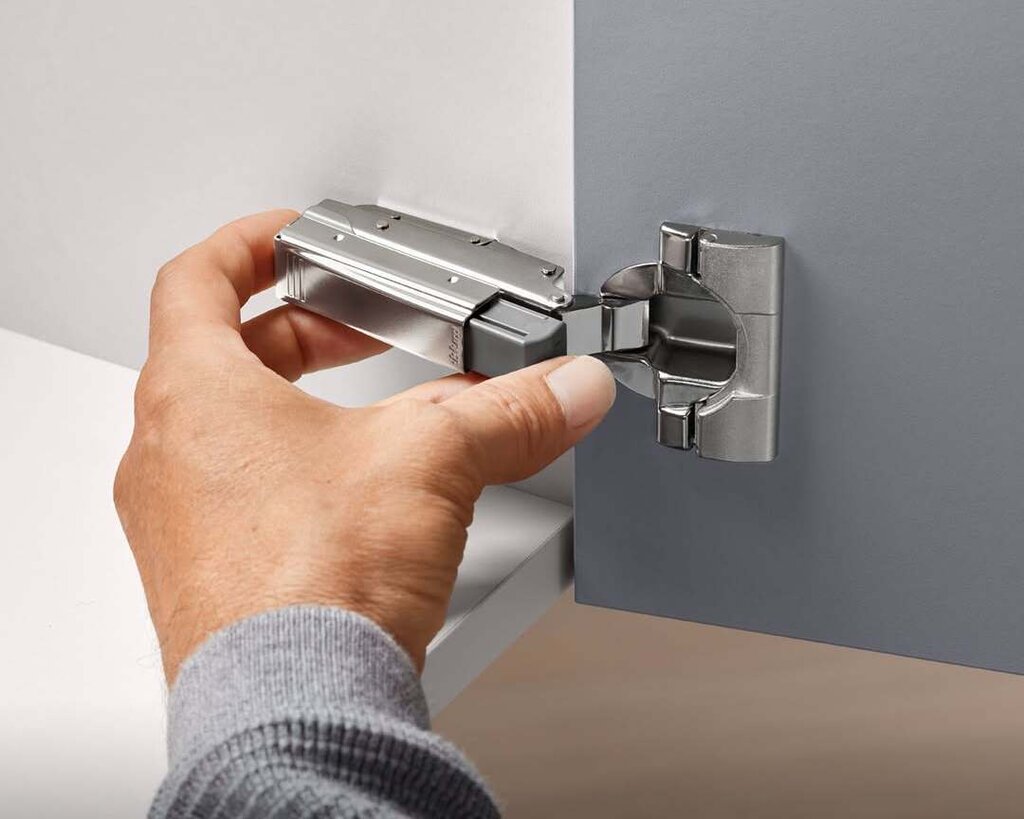Cabinet hinges come in various types, from traditional butt hinges to modern concealed designs, each serving different functional and aesthetic needs. However, two of the most popular options today are soft-close and self-close hinges.
In this blog, we’ll explore these two types in detail, comparing their features, benefits, and drawbacks. By the end, you’ll have a clear idea of which option works best for your cabinets and your lifestyle.
What Are Soft-Closing Hinges?
Soft-closing hinges feature a hydraulic or pneumatic damper that slows the door as it closes, preventing slamming. This mechanism cushions the motion, resulting in a quiet and smooth closure. By integrating soft-closing hinges, you can transform your kitchen into a quieter, safer, and more refined space. They also minimize the risk of pinched fingers, which is perfect for families with small children.
What Are Self-Closing Hinges?
Self-closing hinges automatically pull cabinet doors shut once they are nearly closed. A spring mechanism inside the hinge creates tension that closes the door with minimal effort from the user. These hinges are commonly found in traditional cabinetry where functionality is prioritized, such as in kitchens, bathrooms, and offices. They are ideal for ensuring doors remain closed and keeping contents secure and out of sight.
Key Differences Between the Two
Soft-close and self-close hinges may sound similar, but their features, performance, and installation differ significantly. Choosing the right hinge is especially important for custom cabinets, as they influence how well your cabinets work and how they complement your space. Here’s how they stack up:
1. Cost
Soft-close hinges are typically more expensive and often considered a premium upgrade. They include advanced mechanisms like hydraulic dampers to slow down door movement, adding to their cost. Expect to pay around $15–$30 per hinge for soft-close options. In contrast, self-close hinges are more budget-friendly, priced at $3–$8 per hinge. For large-scale installations or budget-conscious projects, self-close hinges may be the more practical choice.
2. Installation
Both hinge types are relatively straightforward to install, but soft-close hinges can require more precision due to their built-in hydraulic components. Misalignment during installation may cause the soft-close feature to malfunction. Self-close hinges are simpler, relying only on a spring mechanism, making them easier for DIY enthusiasts or quick replacements.
3. Noise Reduction
Soft-close hinges excel at noise control. The hydraulic mechanism slows the door’s closure, preventing slamming. Self-close hinges lack this feature, often allowing the door to slam shut, which can create noise and wear on the cabinet.
4. Durability
Soft-close hinges can protect cabinets from wear and tear over time by reducing impact during closure. Self-close hinges, while durable, do not offer this cushioning effect, which may lead to faster degradation of cabinet doors and frames.
5. User Experience
Soft-close hinges provide a premium feel with smooth, silent operation. They’re a common choice in luxury kitchens and bathrooms where aesthetics and user experience matter. Self-close hinges, though functional, prioritize practicality over refinement, making them ideal for rental properties or secondary spaces.
When to Choose Each Type?
Soft-close hinges are ideal for spaces where silence and convenience make a difference. For example, if you often cook late at night or have family members on different schedules, these hinges help maintain a quiet environment.
They also suit homeowners looking to upgrade their cabinetry for long-term use, particularly in kitchens or bathrooms that benefit from reduced wear and tear. If you’re revamping or painting your cabinets as part of a renovation, adding soft-close hinges can enhance the overall functionality of your updated cabinetry.
On the other hand, self-close hinges are perfect for high-traffic, utility-focused areas where practicality outweighs luxury. Think of rental properties, home offices, or laundry rooms, where keeping cabinet doors consistently closed matters more than avoiding slamming. They’re also a smart choice for quick renovations or large-scale installations where budget constraints are a concern.
Other Hinge Types to Consider
While soft-close and self-close hinges dominate modern cabinetry, other hinge types offer unique features and applications. Here are some worth considering:
Concealed Hinges: Often called “European hinges,” these are hidden from view when the cabinet door is closed, creating a clean, seamless look. They are commonly used in minimalist and contemporary designs. Many concealed hinges also include soft-close functionality for added convenience.
Overlay Hinges: These are designed for cabinets where the door completely covers the cabinet frame. Overlay hinges are available in a variety of styles, including partial and full overlay, making them versatile for different cabinetry designs.
Inset Hinges: Inset hinges are used when the cabinet door is flush with the frame, sitting inside the cabinet opening. These hinges can be either concealed or visible, depending on the design preference, and often add a traditional or vintage touch.
Surface Mount Hinges: These hinges attach directly to the cabinet surface, making them visible when the door is closed. They are easy to install and are often used in traditional or decorative cabinetry.
Pivot Hinges: Designed for specialty cabinets or doors, pivot hinges allow doors to rotate from a single pivot point at the top and bottom. They are ideal for corner cabinets or other non-standard designs.
Spring Hinges: These hinges use a built-in spring to close the door automatically, much like self-close hinges, but without additional damping. They are simple and effective for high-traffic areas.
Final Thoughts
The choice between soft-close and self-close hinges ultimately depends on your needs and priorities. Take the time to evaluate how you use your cabinets and consider the style of your space before making a decision. There’s a wide range of hinge options available, so it’s worth exploring all your choices. For larger projects or custom cabinets, consulting a professional can help you find the perfect fit and ensure proper installation.

